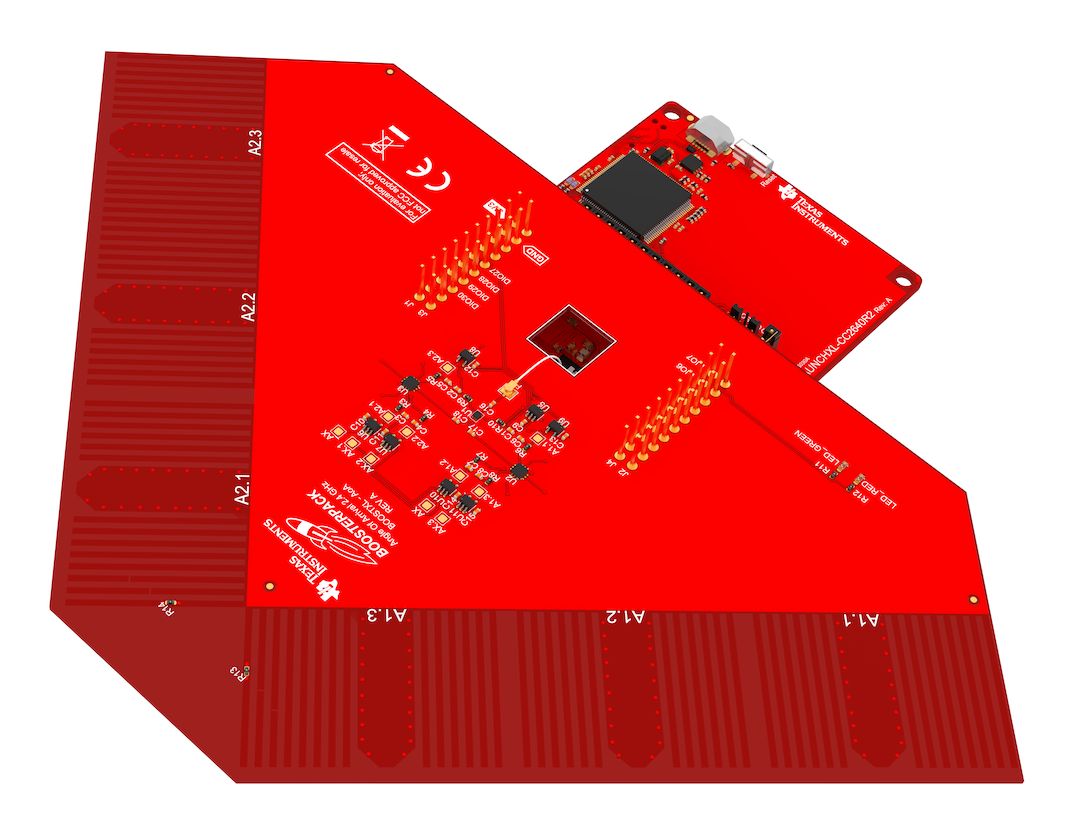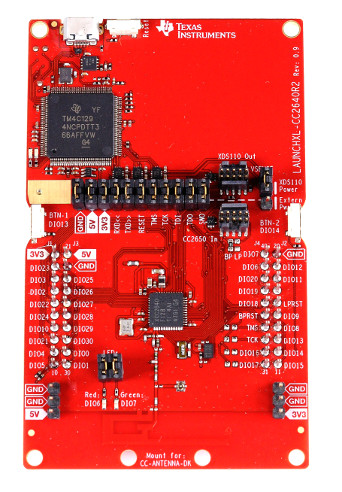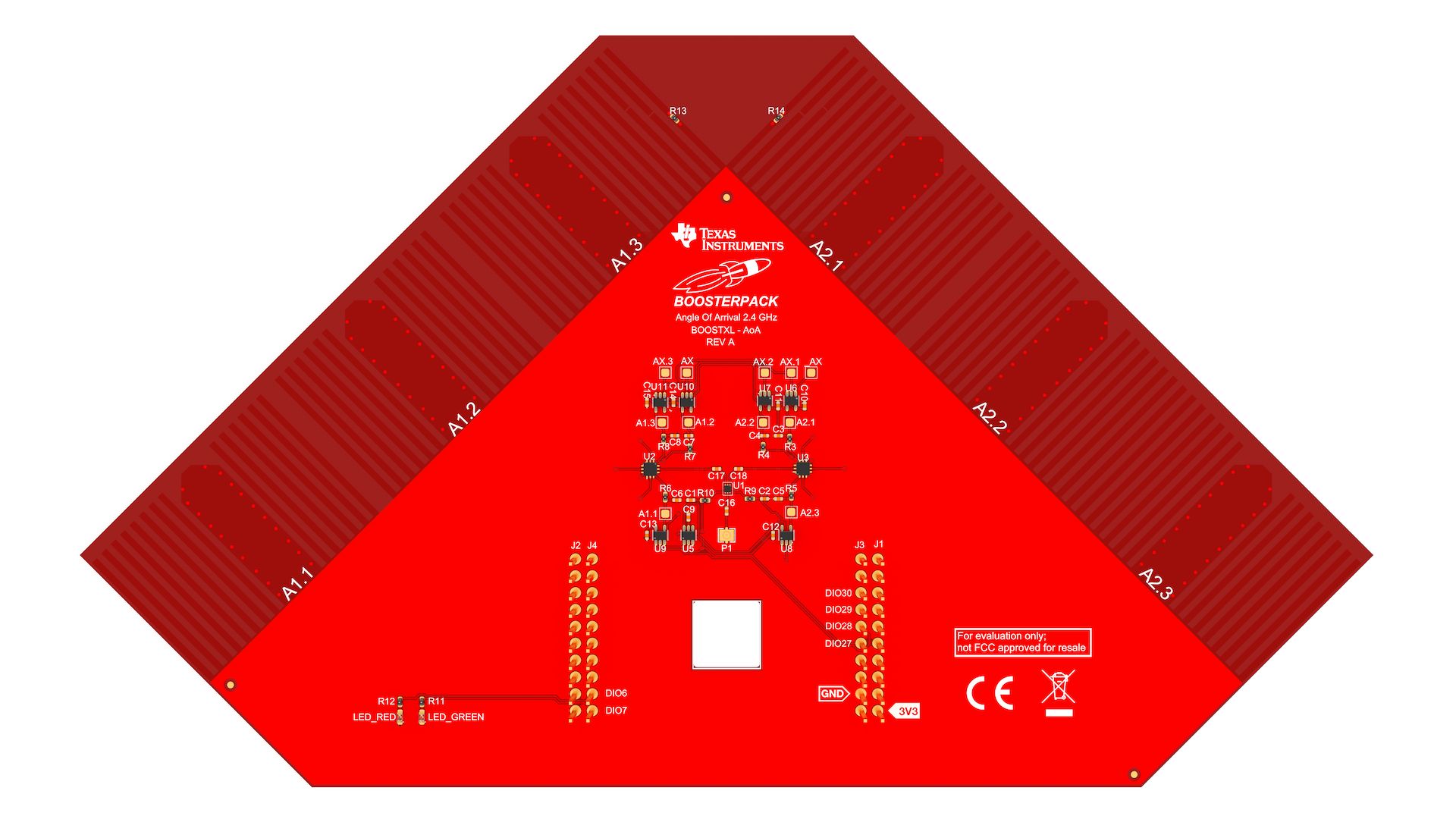# 🛰 Hardware

Image source: http://dev.ti.com/...
Angle of Arrival BoosterPack™
The Angle of Arrival BoosterPack™ kit (BOOSTXL-AOA) was used for this project. This page contains images and text from Texas Instruments developer hub. For the original documentation and sources please refer to the Ti developer hub.
From dev.ti.com
# Angle of Arrival BoosterPack™
The Angle of Arrival BoosterPack™ kit (BOOSTXL-AOA) is an easy-to-use plug-in module equipped with antenna arrays suitable for evaluation of Angle of Arrival applications. The 2 orthogonal antenna arrays each consist of 3 dipole antennas tuned for operation at 2.4 GHz. The antennas are selected with RF switches and then connected to a single JSC connector. The JSC Series connector is used to connect to an AoA compatible RF receiver like the CC2640R2 LaunchPad™.
# Key Features
- Two antenna arrays with three 2.4 GHz dipole antennas on each
- RF switches to switch between the different antennas
- JSC RF connector
- Two LEDs
# CC2640R2 LaunchPad™
The CC2640R2F is a wireless MCU targeting Bluetooth 5 (single-mode BLE) and proprietary applications. The CC2640R2F device contains a 32-bit ARM® Cortex®-M3 processor running at 48 MHz as the main processor, in addition to a 2nd programmable CPU ideal for ultra low-power sensor reading and data processing. It can run independently of the main ARM® Cortex®-M3 MCU and handle sensor polling using just a few µA of average current.

Image source: http://dev.ti.com/...
- On-board emulation tool (XDS110) for flashing & debugging firmware on the target CC2640R2F device
- 40-pin dual-gender BoosterPack connectors
- CC2640R2F Microcontroller device
- User red & green LEDs
- 2x User switches
- Access to all GPIO pins of the CC2640R2F device
- 8 Mbit serial (SPI) flash memory for firmware updates
# BOOSTXL-AoA
The BOOSTXL-AOA demonstration board is a BoosterPack intended to be used with the CC2640R2F LaunchPad, to evaluate Angle-of-Arrival (AoA) applications. The BOOSTXL-AOA is setup with multiple dipole antennas that are utilized to extract information about where a signal comes from. This is done by a combination of software techniques developed by TI, ranging from antenna switching to sophisticated algorithms that calculate the angle of arrival of received signals.

Image source: http://dev.ti.com/...
- 40-pin BoosterPack standard leveraging the LaunchPad ecosystem
- JSC connector to extend RF path from a Launchpad
- 6 integrated PCB-based dipole antennas
- 3 antenna switches
- 2 LEDs (Green/Red)
